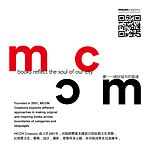emoji. You might expect this book to be about those bright yellow smileys. Yet, emoji means picture writing, or pictogram, with the Japanese word holding two words: e 絵 for picture, and moji 文字 for character, letter, or a complete writing system.
kanji. You might have heard that kanji – the Japanese term for Chinese characters – is ideographic; that you can always ‘read’ the meaning within the form. That’s a myth! The main body of kanji is phono-logographic.
e/moji graphy – the essence of kanji, visually. The third volume in Mariko Takagi’s series, following Hanzi Graphy (in English) and Kanji Graphy (in German), brings new clarity and terminology – an indispensable guide for people interested in the intersections of writing, reading, typography, and culture.
kanji. You might have heard that kanji – the Japanese term for Chinese characters – is ideographic; that you can always ‘read’ the meaning within the form. That’s a myth! The main body of kanji is phono-logographic.
e/moji graphy – the essence of kanji, visually. The third volume in Mariko Takagi’s series, following Hanzi Graphy (in English) and Kanji Graphy (in German), brings new clarity and terminology – an indispensable guide for people interested in the intersections of writing, reading, typography, and culture.




